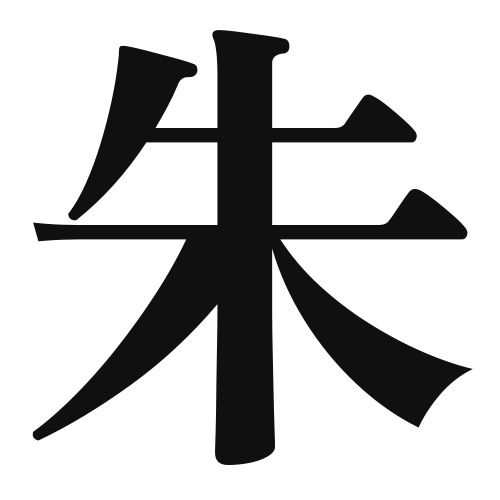1. Overview of Meaning
The kanji “朱” (pronounced “shu”) primarily means “vermilion” or “red.” It is often associated with brightness and is used to describe a vivid shade of red that is both striking and auspicious in various cultural contexts.
2. Formation and Radical
Formation of the Kanji: The kanji “朱” is classified as a phono-semantic compound (形声文字), which means it combines a phonetic component with a semantic component. The left part of the character is a radical that suggests its meaning, while the right part indicates its pronunciation.
Radical: The radical for “朱” is “火” (fire), which relates to the color red, as fire is often associated with warmth and brightness.
3. Examples of Usage
Common Words and Phrases: “朱色” (shuiro) means “vermilion color,” and “朱肉” (shuniku) refers to “red meat.”
Example Sentence in Daily Conversation: “この絵は朱色がとても美しいです。” (Kono e wa shuiro ga totemo utsukushii desu.) translates to “The vermilion color in this painting is very beautiful.”
4. Synonyms and Antonyms
Similar Kanji: “赤” (aka) also means “red,” but it is a more general term that can refer to any shade of red, while “朱” specifically denotes a bright vermilion hue.
Antonym: “青” (ao) means “blue,” which is the opposite color of red in the color spectrum.
5. Cultural and Historical Background
Relation to Japanese Culture: In Japanese culture, the color vermilion is often used in traditional art, architecture, and religious contexts, symbolizing protection and good fortune.
Proverbs and Idioms: The phrase “朱に交われば赤くなる” (Shu ni majiwareba akaku naru) translates to “If you mix with vermilion, you will become red,” meaning that one is influenced by their surroundings or companions.
